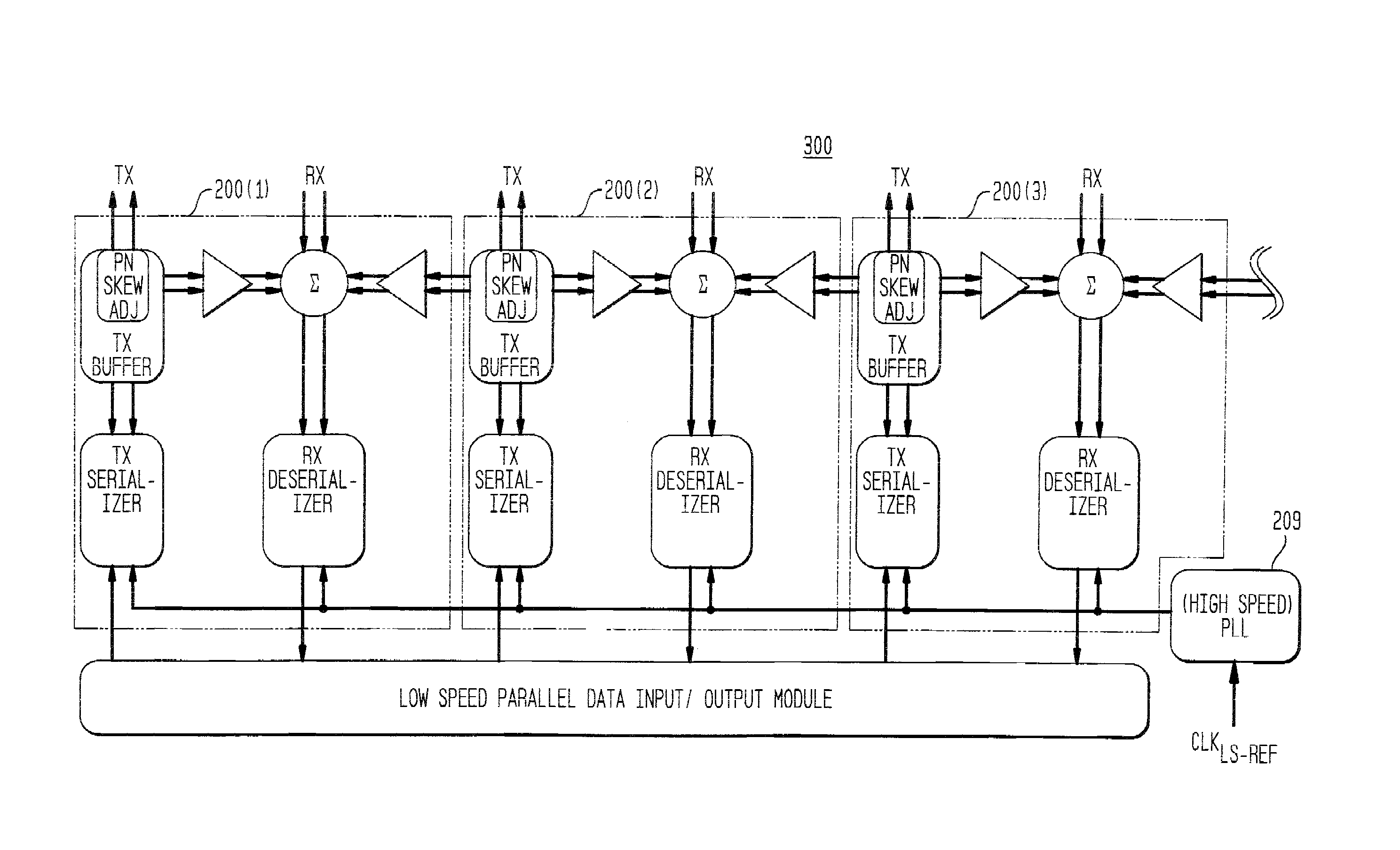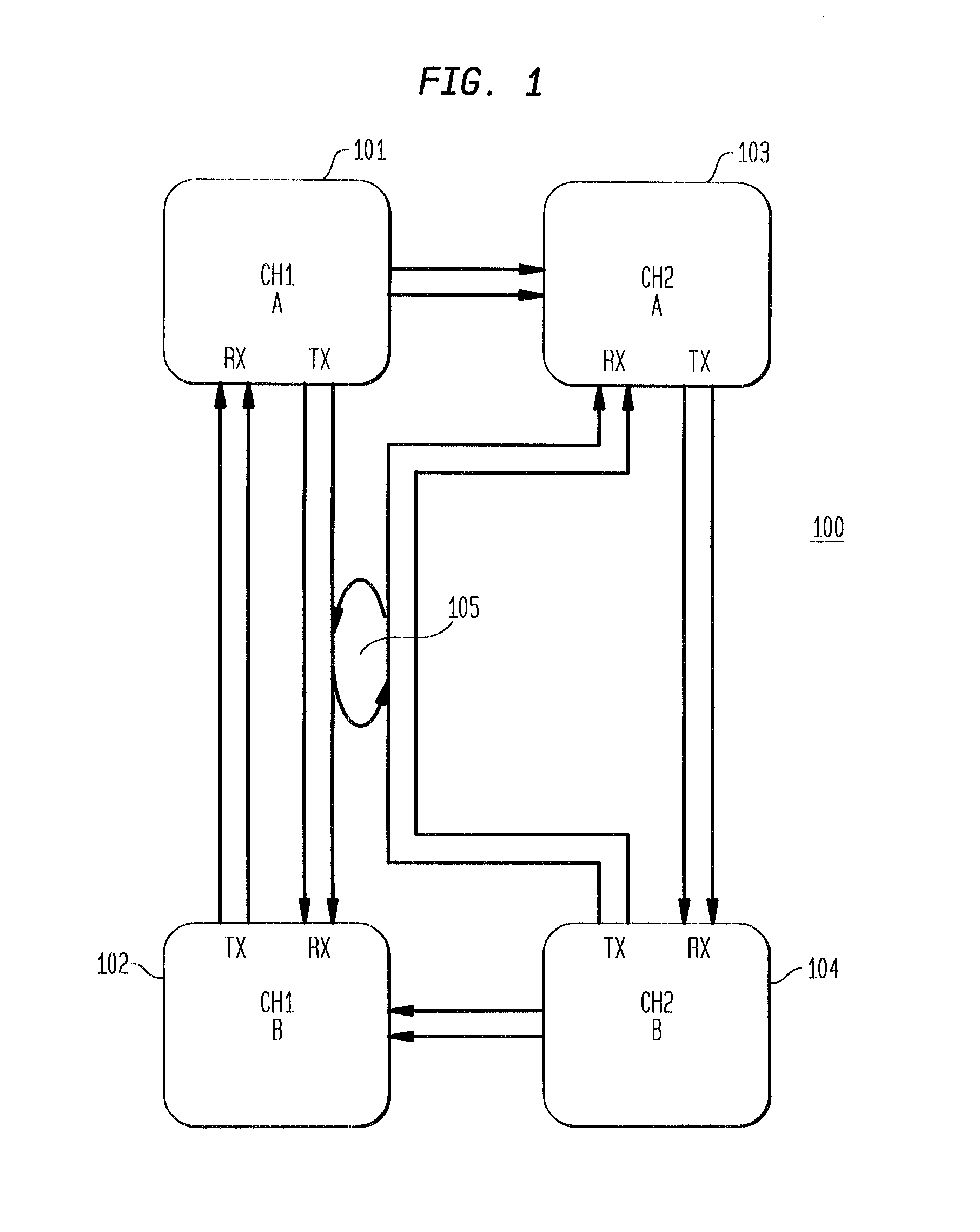Crosstalk reduction in a backplane employing low-skew clock distribution
a backplane and clock distribution technology, applied in the field of channel crosstalk reduction, can solve the problems of common-mode imbalance, coupling of signals in the two channels, and p-n common-mode imbalance, and achieve the effect of reducing near-end crosstalk and reducing far-end crosstalk
- Summary
- Abstract
- Description
- Claims
- Application Information
AI Technical Summary
Benefits of technology
Problems solved by technology
Method used
Image
Examples
Embodiment Construction
[0023]FIG. 2 shows a channel unit 200 employing crosstalk reduction in accordance with an exemplary embodiment of the present invention. In the transmit portion, channel unit 200 comprises transmit (TX) serializer 201, TX buffer 202 including positive-to-negative skew adjuster (PN skew adj) 203, and gain adjuster 204. In the receive portion, channel unit 200 comprises combiner 208, receive (RX) deserializer 205, and gain adjuster 207. Gain adjusters 204 and 207 may be implemented with amplifiers. Channel unit 200 is coupled to phase-locked loop (PLL) 209 and may receive signals from an adjacent channel transmitter. Signals from the adjacent channel transmitter may be modified when passing through the impedance of the backplane or similar structure (shown as package parasitics 206).
[0024]Transmit portion (TX) of channel unit 200 may be coupled to a receiver of a far-end channel unit, while receive portion (RX) of channel unit 200 may be coupled to a transmitter of the far-end channel...
PUM
 Login to View More
Login to View More Abstract
Description
Claims
Application Information
 Login to View More
Login to View More - R&D
- Intellectual Property
- Life Sciences
- Materials
- Tech Scout
- Unparalleled Data Quality
- Higher Quality Content
- 60% Fewer Hallucinations
Browse by: Latest US Patents, China's latest patents, Technical Efficacy Thesaurus, Application Domain, Technology Topic, Popular Technical Reports.
© 2025 PatSnap. All rights reserved.Legal|Privacy policy|Modern Slavery Act Transparency Statement|Sitemap|About US| Contact US: help@patsnap.com



